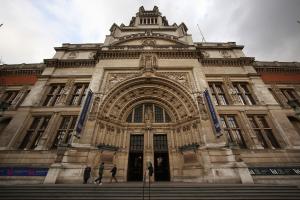A SUCCESS!
Four days of different activities. Three festive nights. Two different trails. One summit to conquer.
“The experience was great. We got what we expected. We got what we came for,” said Melfrance of Mindanao Outdoor Enthusiast.
Indeed, an event worth remembering as 332 adventure-seekers across the country gathered during the 39th Mountaineering Federation of the Philippines, Inc. National Annual Congress Climb on May 24-27, 2018 at Aguakan Cold Spring Resort, Maragusan, Compostela Valley.
Dubbed as Mars Attack!, the event is part of Davao Region's 2018 Visit Davao Summer Festival (VDSF), with the theme, "LongFest and WideFest."
The goal is to climb the Mt. Candalaga Peak at 2,100 meters above sea level. It is without a doubt, a challenge that would surely test the hikers’ physical and mental stamina.
On May 24, the participants were welcomed during the Mayor’s night, sponsored by the Local Government Unit of Maragusan.
In the early morning of May 25, the cold weather did not extinguish the excitement that filled the air as the climbers get ready for their most awaited adventure. A total of 150 participants have joined the trek; 75 of which are going into the summit via hardcore trail while the remaining 75 are via beginners trail.
The hardcore trail features 15 waterfalls upstream; Maranging falls as their jump-off point. Since their location is farther than that of the beginners, the group spent the night at Camp 1 and continued their way the day after.
Only 22 individuals had successfully reached the summit. Joseph Ian Bancale, Charlie and Mark Lawrence Gallarde of Damul Mountaineers were the first three climbers to arrive.
On the other hand, the jump off point for beginners is at the Tagbibinta falls wherein they have to experience an all assault trek going to camp 2. They are given only a day to reach the summit and go back to the host resort.
Though the trail was intended for beginners, some climbers doubt it, “sure sila beginners ni? Hasta mang lisuda.”
Sixty four years old Federico Reyes, Jr., the oldest participant of the National climb, is a participant from Earth Island Outdoor of General Santos City.
“Sus! May lang gani wa ko nag hardcore. Lisod naman gani diri sa beginners unsa nalang didto sa hardcore?” said Tatay Federico, as he stopped to catch his breath. As soon as he regained little of his energy, he started to make his way up again. Unfortunately, even before reaching Camp 2, Tatay Federico decided to raise the white flag.
Nevertheless, he was still happy and thankful for the experience.
“Nalipay ko nga nakaapil ko from Gensan team. And we hope that more mountaineers will come next year for this kind of activity. This is really a good thing to refresh,” he ended.
The top 4 climbers for beginners category were all members of One Two Trekkers; Henry Seron, Eric Angeles, Miller Cascaro and Quirico Cajegas.
As all the climbers have gone down from the peak on May 26, they enjoyed another night of booze party, chill out with new friends, and be inspired with music. This time sponsored by the Provincial Government of ComVal.
On the last day, a tree planting activity was held as a way of preserving nature. (Sheldane Mahinay // ID Comval)










